The Southwest US boasts a rich tradition of coil pottery stretching back over two millennia. Coil pottery first emerged in Central Mexico around 4,000 years ago. It gradually migrated north over a long period, reaching the present-day Arizona and Tucson areas by roughly 150 AD, marking the earliest evidence of coil pottery in the Southwest.
Where Did Coil Pottery Originate?
Coil pottery’s origins in Central Mexico can be traced back roughly 4,000 years. The spread northward was a slow process, taking nearly 2,000 years to reach the American Southwest. Here’s a more detailed look at its beginnings:
- Central Mexico (4000 years ago): This is where the earliest evidence of coil pottery has been found. The exact location or culture responsible for its invention isn’t definitively pinpointed, but archaeological finds point to Central Mexico as the birthplace of this technique.
- Historical coil pottery, particularly in the American Southwest, boasts a rich and fascinating story.
- Coil pottery boasts a long and fascinating history in the American Southwest.
Indigenous communities embraced and transformed the technique, making it their own.
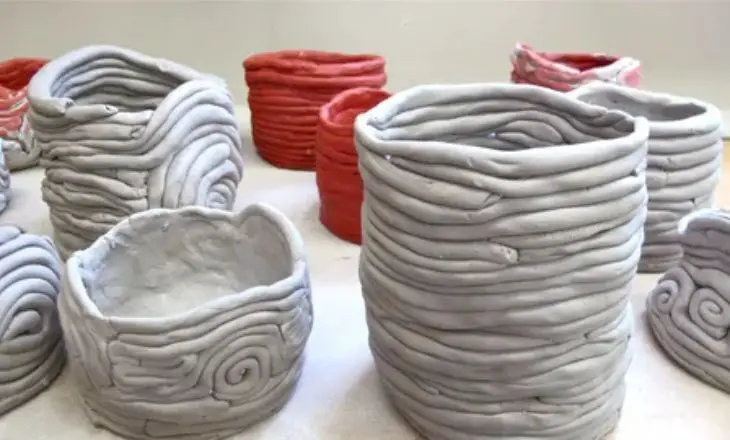
Two Ways of Making Pottery
There are two main ways of making pottery:
- Wheel Throwing: This method involves a spinning pottery wheel and is known for creating symmetrical shapes. Here’s a quick breakdown:
- The potter centers a ball of clay on the spinning wheel. This ensures an even starting point.
- Using their hands and tools, the potter shapes the clay on the wheel. Common shapes include bowls, mugs, and vases.
- The skill lies in controlling the pressure and speed to achieve the desired form.
- Hand-building: This method offers more freedom in creating unique shapes and is great for beginners. Here are some popular hand-building techniques
- Slab building: Clay is rolled out flat using a rolling pin or slab roller. Cutouts are made from the slabs, which are then joined together to create a piece.
- Coiling: Long ropes of clay are built upon each other, then smoothed and shaped into the desired form.
- Pinching: A simple technique where a ball of clay is pinched and shaped by hand.
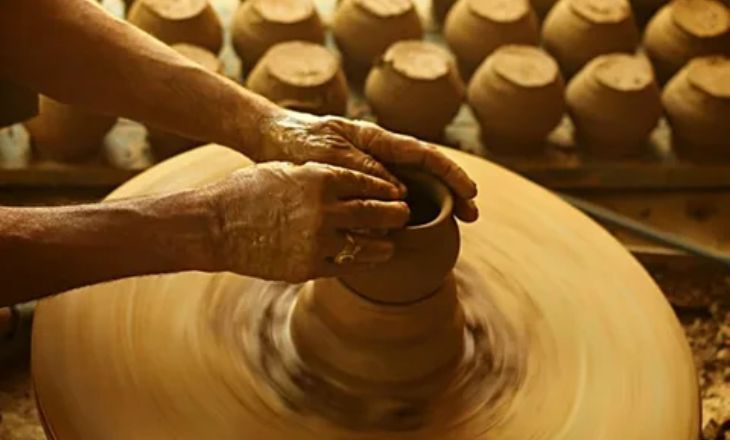
Coil Pottery Gets Decorated
Coil pottery offers a fantastic canvas for creative decoration.
- Slip painting: Use colored clay slip (liquid clay) to paint designs directly onto the pot’s surface.
- Sculpted details: Sculpt features like handles, animal figurines, or other embellishments from separate pieces of clay and attach them to the pot.
- Found objects: Press interesting stones, shells, or other objects into the clay surface for a unique look.
Pottery traditions where specific pieces hold immense fame, Southwestern coil pottery is celebrated for its enduring tradition and regional variations rather than having one single “most famous” piece.
Coil pottery is an ancient technique for building ceramic vessels by rolling clay into long, snake-like coils and then carefully stacking and smoothing them together to create the desired shape. It’s a versatile and enduring method that has been used by cultures around the world for thousands of years.
- Coil Construction: The core of coil pottery lies in creating long, even coils of clay. These coils are then strategically placed one on top of another, with the damp clay fusing together to form the vessel walls.
- Smoothing and Shaping: As coils are added, potters use various tools and techniques to smooth the seams and manipulate the clay to achieve the desired form. This might involve pinching, scraping, or paddling the clay.
- Building Layers: The process of adding and smoothing coils continues until the desired height and shape of the vessel are reached. The rim of the pot is then shaped and finished.
Late Prehistory, Glaze and Coal
A breakdown of how glaze, coal, and Late Prehistory might intersect:
- Glaze: True glazes, with a glassy appearance and waterproof qualities, were generally not a feature of pottery in Late Prehistory (roughly 10,000 BC to 3,000 BC). Early pottery decoration often relied on pigments or polishing for visual interest.
- Coal: While coal existed during Late Prehistory, its use for firing pottery wasn’t widespread. Wood was likely the primary fuel source for firing kilns.
While glaze and coal weren’t prominent features of Late Prehistoric pottery, understanding their later development helps us appreciate the technological advancements in ceramics throughout history.
- Late Prehistory, roughly spanning from 10,000 BC to 3,000 BC, marks a significant period in human history. It’s a time of transition between the nomadic hunter-gatherer lifestyle of the Paleolithic era and the rise of settled societies and early civilizations in the following periods.
Spanish Influence
The arrival of the Spanish in the Southwest around 1540 did impact pottery traditions but in interesting ways.
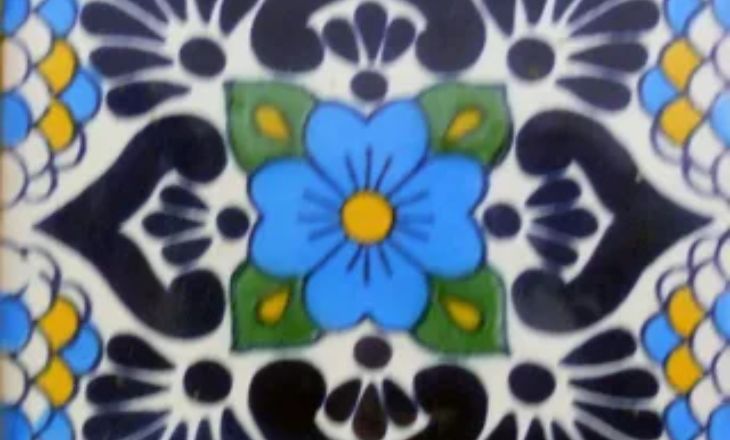
The arrival of the Spanish in the Southwest around 1540 undoubtedly shook things up, and pottery wasn’t exempt. While Indigenous traditions remained strong, Spanish influence did leave its mark, creating a fascinating blend. Historical coil pots, particularly in the American Southwest, boast a rich and fascinating story.
Fusion, not Replacement: The key takeaway is that Spanish influence wasn’t a replacement of Indigenous traditions. It was a fusion. Existing pottery-making practices continued, with some possible new elements incorporated over time.
Adaptation and Innovation: Indigenous potters were not passive recipients of influence. They adapted and innovated, creating new designs and incorporating Spanish elements into their existing styles. They might have used new shapes introduced by the Spanish but decorated them with traditional geometric patterns.
Tourist Pottery
Tourist pottery refers to ceramic pieces made specifically for tourists to buy as souvenirs. These items are typically:
- Mass-produced: Tourist pottery is often produced in large quantities to meet the demand of souvenir shops and tourist destinations.
- Focused on Souvenirs: The designs often feature imagery or themes مرتبط (rèng shù) with the specific location where they are sold. This could include landmarks, local animals, or cultural symbols.
- Relatively inexpensive: Since they are mass-produced, tourist pottery tends to be more affordable than handcrafted pieces.
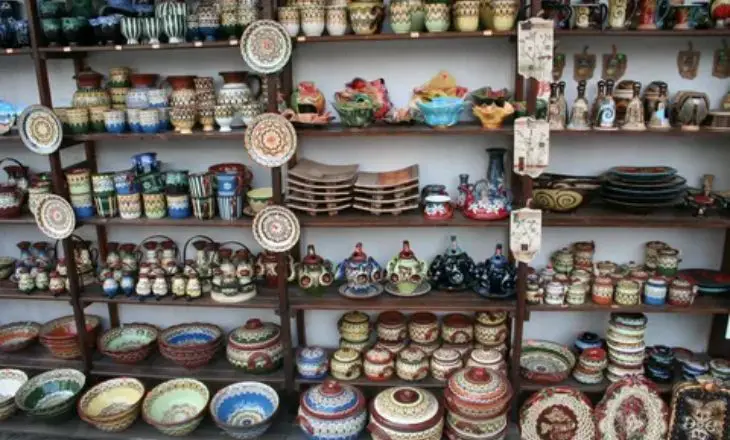
Always high art, tourist pottery offers a window into popular tastes and cultural trends of a particular time and place. It can also serve as a reminder of a cherished vacation or travel experience. Tourist pottery reflects the desire for people to connect with the places they visit and take home a tangible piece of the memory.
History Of Coil Pots
Coil pots remarkable history, with roots reaching back thousands of years. Here’s a compelling look at its evolution, particularly in the American Southwest:
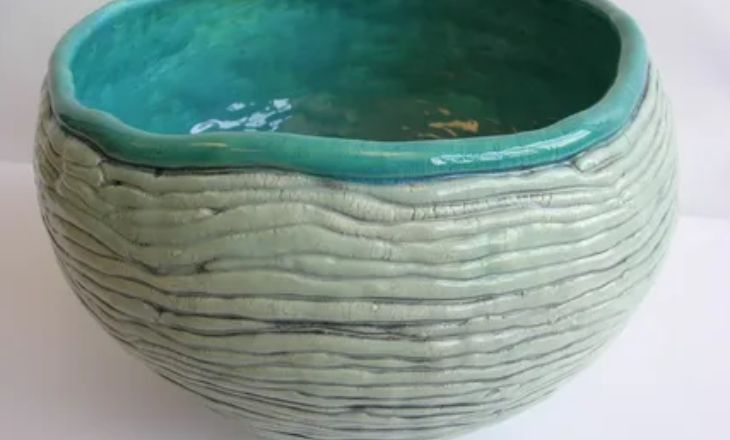
The story begins in Central Mexico, where archaeological evidence suggests the birth of coil pottery around 4,000 years ago. The exact origin point or culture responsible for this innovation remains a mystery.
A vast period of nearly 2,000 years, knowledge of coil pottery spread northward through trade and cultural exchange. This slow migration highlights the limitations in communication and travel during that era. Imagine the knowledge being passed down through generations, carried by skilled artisans
Conclusion
The history of coil pottery in the Southwest is a testament to cultural endurance, adaptation, and artistic expression. Coil pottery serves as a reminder of the enduring creativity and cultural exchange that has shaped the Southwest for centuries. It’s a testament to the ability of human societies to adapt and innovate, leaving behind a lasting artistic legacy.
Coil pottery boasts a remarkable journey, originating thousands of years ago in Central Mexico and finding a vibrant home in the American Southwest around 150 AD. Indigenous communities embraced the technique, transforming it into a cornerstone of their artistic heritage.
FAQs
What is the most famous Native American Coil Pottery?
Black-on-black pottery is one of the most well-known art forms to come out of New Mexico.
What Were Ancient Coil Pots Made Of?
The Ancient Greeks made pots from clay. Large pots were used for cooking or storing food and small bowls and cups were made for people to eat and drink from.
What Is The History Of Pueblo Pottery?
Pottery has been found in the regions occupied by the Ancestral Puebloans; these artifacts have been dated as far back as AD 200.
